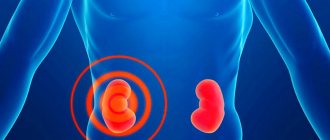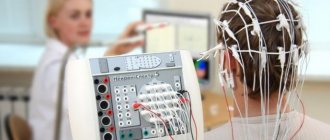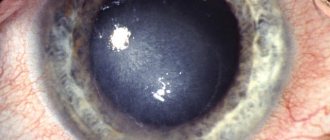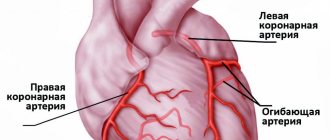Paresthesia is numbness of the limbs or other areas, which is accompanied by subjective symptoms such as burning or tingling. In many cases, the disease is curable - medications and physiotherapeutic procedures are used for therapy. If necessary, surgery may be prescribed.
Paresthesia: what is it?
This term refers to a sensitivity disorder in which a person feels a burning, tingling or “crawling” sensation. These are subjective sensations associated with objective reasons. As a rule, they are associated with irritation of a nerve that lies close to the surface of the skin. This may be the result of a shock, mechanical pressure, or due to a temporary interruption of the blood supply.
The main factors leading to paresthesia:
- prolonged compression, for example, of a limb;
- osteochondrosis of any part of the spine;
- tumors of different nature (benign, oncological);
- tourniquets that are applied to stop bleeding;
- nerve ending injuries;
- burns, exposure to high temperature (this may cause problems with the sensitivity of the tongue and lips);
- inflammation in the vascular tissues that supply nerve cells with blood;
- diabetes mellitus and other hormonal disorders;
- poisoning with chemical poisons, biological toxic substances;
- deficiency of certain B vitamins;
- Iron-deficiency anemia;
- intermittent claudication;
- atherosclerosis;
- incorrect position at night (during sleep);
- mechanical shocks.
Paresthesia of the upper respiratory tract
- a type of sensitivity disorder in the pharynx and larynx. Clinical manifestations of paresthesia of the upper respiratory tract are varied, they include the feeling of a “lump in the throat” (CH), soreness, tingling, numbness in the pharynx, in the projection of the larynx. Paresthesia is often accompanied by a persistent cough, a feeling of lack of air, difficulty swallowing, and dysphonia.
The most common complaint is the feeling of CG, which significantly worsens the quality of life of patients [1] - from 4.1 to 5% of the reasons for visits to an otolaryngologist [2].
In the history of 46% of practically healthy people, episodes of complaints about the sensation of CG were noted. Patients with this symptom seek help from doctors of various specialties: otorhinolaryngologists, phoniatrists, neurologists, endocrinologists, gastroenterologists. Many patients (78%) consult with oncologists, which is explained by severe cancer phobia [3].
“Lump in the throat” was first described by Hippocrates about 2,500 years ago. Until the 70s of the 19th century, CG was designated by a single term - “globus hystericus”
, since it was observed in women with a hysterical personality type during menopause.
In 1968, K. Malcomson proposed the term “globus pharyngeus”
, having discovered reflux esophagitis in the majority of patients with CG. He also argued that the hysterical personality type is not typical for this category of patients [4].
The symptom of CG is equally common among men and women of the middle age group (41-50 years). The sensation of CG is projected onto the anterior surface of the neck, along the midline between the suprasternal notch and the thyroid cartilage. CG is characterized by a non-painful sensation of a foreign body in the throat, which is usually long-lasting and difficult to treat, with a tendency to recur [2, 5]; the symptom is accompanied by esophagospasm, anxiety and fear of choking and is characterized by an intermittent nature of the course. Patients often experience dysphonia, a desire to “swallow” or cough, a feeling of “a film or accumulation of mucus,” and difficulty swallowing (usually saliva).
Etiology
CG is a symptom of many diseases. According to the literature, the most common cause is gastroesophageal reflux disease (GERD) [6]. GERD is characterized by pathological reflux of gastric contents, leading to irritation and inflammation of the mucous membrane of the hypopharynx, larynx, nasopharynx, as well as increased tone of the upper esophageal sphincter. K. Malcomson [7] proposed to consider CG as a manifestation of GERD. J. Koufman found GERD in 58% of patients with CG, R. Rival et al. - in 73% of patients [8]. Complete disappearance or significant reduction of CH symptoms was observed in 84% of patients receiving antireflux therapy. J. Cherry et al. [9] conducted a study with the introduction of a solution of hydrochloric acid into the distal esophagus in 12 patients, in 10 they noted the appearance of a feeling of CG. The data obtained allowed the authors to assert that GERD is an important factor in the development of “cervical symptoms” - uncomfortable sensations in the neck and pharynx, with unclear localization. According to J. Koufman [10], the most common “cervical symptoms” include hoarseness (71%), paroxysmal cough (51%), lump in the throat (47%), and discomfort in the throat (42%).
Often, the diagnosis of GERD can be assumed based on data obtained during laryngoscopy. The endolaryngeal picture with GERD is characterized by hyperemia, hyperplasia of the mucous membrane of the interarytenoid region, arytenoid cartilages, vestibular part of the larynx, vocal folds, subglottic space, and the presence of thick mucus in the lumen of the larynx.
However, P. Moloy, R. Charter deny the leading role of GERD in the development of CG. The authors note that as a result of the studies, symptoms of GERD were identified in 38% of cases (4330 people) in patients with CG and in 36% in the control group. At the same time, treatment of reflux esophagitis with the use of antireflux therapy did not lead to relief of the symptoms of CG [11].
CG can occur with esophageal pathology. Impaired esophageal motility in patients with CH ranges from 6 to 90% according to various authors [12]. However, there have been no studies that would confirm that therapy for this pathology leads to a reduction in the symptoms of CH.
Dysfunction of the upper esophageal sphincter and cricopharyngeal hypertension are considered by many authors as the cause of CH [13]. J. Wilson et al. [14] measured the pressure of the upper esophageal sphincter (UPS) using manometry and found a significantly greater fluctuation in the SPE pressure in patients with CG (from 140 to 220 mm) compared to patients in the control group (from 70 to 140 mm).
P. Jamsom [13] conducted a study with a single administration of muscle relaxants to relieve muscle spasms in patients with CH. A temporary positive effect was obtained. Cases of botulinum toxin being administered to patients into the cricopharyngeal muscles have been described, which led to a significant reduction in complaints about CH.
Heterotopia of the gastric mucosa into the esophagus and posterior parts of the larynx, as well as acid secretion from heterotropic areas, can cause the sensation of CG.
H. Alagozlu et al. [15] argue that the sensation of CG may be associated with heterotopia of the gastric mucosa into the esophagus and posterior parts of the larynx, affected by the Helicobacter pylori bacterium.
E. Kasap et al.
[16] revealed the presence of Helicobacter pylori
in 75 (60%) of 123 patients with complaints of CH. The authors noted a significant reduction in CH symptoms in patients receiving eradication therapy.
Chronic diseases of the ENT organs (chronic pharyngitis, chronic tonsillitis, chronic sinusitis, postnasal drip syndrome, neoplasms of the larynx and hypopharynx) may be accompanied by a feeling of CH [17, 18]. Also, long-term use of certain groups of medications (diuretics, ACE inhibitors, antimuscarinics, antihistamines) reduces the secretory activity of the glands of the mucous membranes, which in turn leads to the development of subatrophic pharyngitis, laryngitis and the feeling of CG in patients [5].
Y. Shiomi et al. [17] revealed an increase in the viscosity of nasopharyngeal mucus in patients with CG (increased concentrations of fucose and sialic acid) compared to the control group.
W. Cho, H. Park [19] note that calculous deposits in the crypts of the tonsils (tonsilloliths) cause a feeling of CG in patients.
An abnormal development of the epiglottis (“excessively inverted epiglottis”) can cause CG due to its contact with the base of the tongue or the posterior wall of the pharynx [20].
According to some authors, hypertrophy of the lingual tonsil may be the cause of CG [14]. However
R. Mamede et al. [21] noted that this pathology in most cases is characteristic of patients with GERD.
T. Ulug and S. Ulubil [22] described cases of CG sensation in patients with subluxation of the arytenoid cartilages.
Pathology of the thyroid gland (nodular changes) in patients can lead to complaints of CG [23].
S. Nadig, S. Uppal et al. [24] believe that the presence of pathology of the superior horn of the thyroid cartilage (medial location) may cause complaints about CG.
CG can occur with pathology of the cervical spine: cervical osteophytes, myositis, osteochondrosis [25]. In Forestier's disease (idiopathic skeletal hyperostosis), characterized by calcification and ossification of the anterolateral surfaces of the spine, the formation of osteophytes and spurs, and calcification of soft tissues, complaints of CG arise. It is advisable to perform flexible laryngoscopy, as well as CT of the cervical spine to diagnose the disease. G. Hammer et al. [26] identified prevertebral soft tissue tendinitis in 10 patients with CG and suggested MRI (diffusion-weighted imaging) to improve the diagnosis of the disease.
H. Hagino [27] noted a significant decrease in bone mineral density in 29 patients with CG. Based on the data obtained, the author concluded that CH may be associated with a decrease in bone mineral density.
Some authors classify complaints about CH as an atypical manifestation of an allergic reaction [28].
In neurological disorders (such as degenerative diseases, myasthenia gravis, post-stroke conditions, vagus nerve injuries), complaints about CG may occur [29].
Malignant neoplasms of the neck - smooth muscle tumors, lymphangiomas, cancer of the hypopharynx (pyriform sinus), oropharyngeal metastases of Merkel cell cancer may be accompanied by a feeling of CG. However, the leading signs of cancer will be: weight loss, hoarseness, sore throat, dysphagia, odynophagia, aspiration, regurgitation [29].
Doctors often wonder whether the feeling of CG is one of the first symptoms of a tumor disease. H. Rowley et al. [30] conducted a seven-year observation of patients with complaints of CG. No patient was diagnosed with malignancy. R. Harar, S. Kumar et al. [31] examined 699 patients with complaints of CH; in only 5% of cases, malignant neoplasms of the upper digestive tract were detected. Also, the benign nature of CG is noted by N. Oishi et al. [32]. The data obtained indicate that, despite the fact that CG is only in rare cases a symptom of a tumor of the upper respiratory tract and neck organs, it is necessary to conduct a thorough examination of the patient to exclude the tumor genesis of complaints.
To date, the significance of stress factors and changes in psycho-emotional status in the development of the feeling of CG remains unclear.
According to the literature, in 45% of patients the symptom of CG is a sign of a stress disorder. Up to 96% of patients with complaints of CH note an exacerbation of symptoms during periods of increased emotional stress [33].
Patients experiencing CG were found to have higher levels of alexithymia, neuroticism, and lower levels of extraversion compared to subjects in the control group [34].
M. Harris et al. [35] identified mental disorders when examining 24 patients with CH. In 1996, the authors noted in the anamnesis of 50 patients with complaints about CG, psychological difficulties (lack of close trusting relationships, conflict situations) that arose in the subjects approximately 12 months before the appearance of the above complaints. The psycho-emotional load in the history of patients with complaints of CG was significantly higher than that of those examined in the control group (30 patients). The authors came to the conclusion that increased psycho-emotional stress and social stress can cause the development of CH.
According to the ICD-10 nomenclature, CG is included in the group “neurotic, stress-related and somatoform disorders.” According to E. Othmer et al., CH is the fourth most common symptom of somatic disorders after vomiting, functional aphonia and pain in the extremities. CH has also been characterized as a manifestation of depressive, conversion and personality disorders [30, 36].
However, many authors did not find significant differences in the psychoemotional status of patients with a feeling of CG compared to the control group [37].
There are few publications in the literature about other possible causes of CG, such as stylohyoid syndrome (Eagle syndrome) [38], iron deficiency anemia [39], hypofunction of the salivary glands [40], dysfunction of the temporomandibular joint [41], phlebectasia of the jugular veins [42].
Diagnostics
There is still no single diagnostic algorithm for examining patients with complaints of CG. The main goal of differential diagnosis when complaining of CG is to exclude organic pathology of the neck organs. According to K. Malcomson [4], only 20% of patients with CH had no organic pathology identified.
Examination of patients with CH requires a thorough history of complaints, a detailed study of the history of the disease and life, and identification of unfavorable factors of the patient’s heredity (mental illnesses, oncology). The algorithm for examining such patients should include an otorhinolaryngological examination using endoscopic diagnostic methods, as well as consultation with related specialists (gastroenterologist, neurologist, endocrinologist, psychiatrist).
To exclude electrolyte disturbances, hypo- or hyperglycemia, systemic infections, iron deficiency anemia, hypothyroidism, it is necessary to use laboratory research methods.
To identify organic pathology of the esophagus and stomach, including malignant neoplasms, barium radiography of the esophagus is used. But many authors note the inappropriateness of this method for examining patients with CH [2, 43].
Endoscopic diagnostic methods are widely used to examine this category in order to identify pathology of the upper digestive tract.
At the present stage, the only reliable way to diagnose GERD is 24-hour combined multichannel intraluminal impedance of the esophagus - pH monitoring. This test is particularly effective in patients with persistent reflux symptoms who are receiving antireflux therapy (API). It allows you to record the presence of slightly acidic (pH from 4 to 7) and slightly alkaline reflux, which is characterized by a pH of more than 7.
To identify extraesophageal (otolaryngological) manifestations of GERD, it is recommended to perform a rabeprazole test (PPI test - rabeprazole), the sensitivity of which is 78-86%.
The absence of organic pathology in patients with CG is one of the indications for conducting a psychological and psychiatric examination. Patients in this category usually have difficulty discussing anxious and conflict situations. Thus, active identification of possible psychological conflicts will help identify pathological anxiety and depression.
Treatment
Currently, the diagnosis and treatment of patients with complaints of CG remains one of the unsolved problems of modern otorhinolaryngology. Therapeutic tactics are determined based on the identified etiological factor.
Depending on the cause, the following types of treatment for CG are used: treatment of ENT pathology, phonopedic exercises to relieve vocal discomfort, anti-reflux therapy - PPI, the use of H2 receptor antagonists, antidepressants, cognitive behavioral therapy.
The literature describes cases of decreased complaints of CG during thyroidectomy in patients with thyroid pathology, and epiglottotomy in cases of abnormal development of the epiglottis [21]. When heterotopia of the gastric mucosa is detected in the esophagus and posterior parts of the larynx, some authors propose to remove it by coagulation with argon plasma, which leads to a decrease in complaints about CG.
Psychoanalysis, body-oriented insight therapy, and hypnotherapy in patients with complaints of CG have been described with little success.
In patients with persistent complaints of CH, relaxation methods were successfully used in treatment, including exercises for the muscles of the neck and shoulder girdle, psychopharmacotherapy (tricyclic antidepressants, selective serotonin reuptake inhibitors, etc.) [14].
C. Kiese-Himmel recommends the use of psychopharmacotherapy in combination with cognitive behavioral psychotherapy for the treatment of patients with CH. There was a significant decrease in the manifestations of CH in patients who underwent a course of hypnotic relaxation [44].
Forecast
A favorable outcome depends on early, timely diagnosis and treatment of CG.
According to C. Timon et al. (cited from [11]), 60% of patients experience a decrease in the symptoms of CG over time. However, in 1/3 of patients, complaints about CG do not resolve over time. F. Guggenheim [45] treated patients with psychosomatic disorder. There was an improvement in the condition and a decrease in the severity of the feeling of CG within 2 weeks. However, up to 1/4 of patients in this category noted relapses of complaints about CG within a year.
Thus, treating patients with CH is a complex task, which is associated with a variety of etiological factors. Therefore, the development of an adequate diagnostic algorithm for examining this category of patients and the use of new therapeutic measures, including non-pharmacological ones, is the key to successful treatment.
Types of paresthesia
There are 2 main forms of the disease – transient and chronic. In the first case, tingling, burning and other unpleasant sensations go away on their own, without the use of drugs or surgical intervention. For example, if a person has been in an uncomfortable position for a long time, it is enough to change position, perform an exercise, and the paresthesia will go away without additional treatment.
However, there are also chronic paresthesias. They are associated with damage to different parts of the nervous system. In turn, they are divided into several types:
- Primary – against the background of infection, for example, HIV, tumor or autoimmune.
- Secondary - against the background of alcoholism, lack of B vitamins, metabolic disorders, for example, in the case of diabetes.
Rarely, paresthesia manifests itself as numbness of the lips, tongue or chin. Moreover, similar phenomena occur due to dental intervention (removal of wisdom teeth).
Another type is acroparesthesia. These are severe pains in the arms or legs associated with Fabry disease or calcium deficiency, or disturbances in the functioning of peripheral nerves. The main symptoms are tingling, numbness, burning, and numbness in the extremities, especially the fingers.
4.Treatment
It is easy to see that with the number and variety of possible causes for the development of paresthesia described above, it is impossible to indicate universal therapeutic regimens (or at least general approaches to its treatment). Prescriptions, of course, take into account the entire array of diagnostic data obtained. In some cases, vitamin therapy may be sufficient, in others it is impossible to do without vertebrological or neurosurgical oncology intervention, in others, the only solution may be a change of job (if, for example, the profession is associated with chemical hazards). If paresthesia occurs against the background or as part of a chronic disease of the endocrine, cardiovascular or other system, it will be necessary, first of all, to treat and/or relieve the exacerbation of the underlying disease.
However, in any case, if any unusual, unusual, outwardly inexplicable sensations in the skin occur, you should definitely consult a doctor, since paresthesia sometimes turns out to be only a harbinger of much more serious problems or the tip of a formidable iceberg, which for the time being does not manifest itself in anything else.
Accompanying illnesses
Paresthesia often develops against the background of such pathologies:
- sciatica;
- cervical spondylosis;
- diabetic neuropathy;
- transverse myelitis;
- restless legs syndrome (tingling and burning in the legs).
If complications occur, the disease can progress rapidly. Therefore, patients with these diseases should undergo periodic medical examination.
Main symptoms
The main symptoms of the disease, regardless of the type, include:
- numbness – weak and strong;
- tingling;
- burning sensation;
- the feeling that goosebumps are crawling all over the body.
Indirect signs are:
- pale skin;
- previously unexperienced hair loss;
- decrease in temperature (only in the affected area).
Often these symptoms occur in the feet, in the neck, especially on the side, on the hands, and in the head area. Normally, such sensations gradually disappear without treatment. But if they are repeated again and again and become pronounced and long-lasting, this clearly indicates the development of the disease. In such cases, you need to consult a doctor for diagnosis and treatment.
Frequently asked questions about paresthesia
Which doctor treats paresthesia?
It all depends on the cause of the sensitivity disorder. For your first consultation, you can contact a neurologist. If necessary, he will give a referral to the right specialist.
How to determine paresthesia?
The main symptom is tingling in the affected area. It is often accompanied by numbness and a crawling sensation.
Where is paresthesia most common?
In most cases, sensitivity is impaired in the legs and arms. But in certain cases, discomfort can occur in different parts of the body, including the face.
Diagnosis of the disease
To determine the disease, the doctor conducts a visual examination, studies the patient’s history and complaints. For example, the condition of the skin, its color and temperature are checked. Laboratory diagnostic procedures are also carried out:
- blood analysis;
- toxicological analysis;
- MRI of the spine, head;
- Ultrasound of cervical vessels;
- X-ray of legs;
- diagnosis of the thyroid gland.
3. Symptoms and diagnosis
Actually, paresthetic sensations are described quite fully at the beginning of the article. In a generalized form, paresthesia can include any sensation in the skin (or under the skin) in which there is no directly observable stimulus in this area. As a rule, paresthesia does not include pain, which is also often accompanied by lesions of the nerve pathways (for example, with herpes zoster).
Paresthesia is diagnosed based on a careful study of the history and sensations verbalized by the patient during a clinical interview and examination (sometimes the condition of the skin in the disturbing area is significant). Skin sensitivity as such must be examined: areas of slightly or insensitive skin are often found. To clarify the nature and localization of the causes of paresthesia, electroneuromyography may be prescribed, as well as, if indicated, tomographic studies of the brain and/or spinal cord; toxicological, virological, biochemical laboratory tests, etc.
About our clinic Chistye Prudy metro station Medintercom page!









